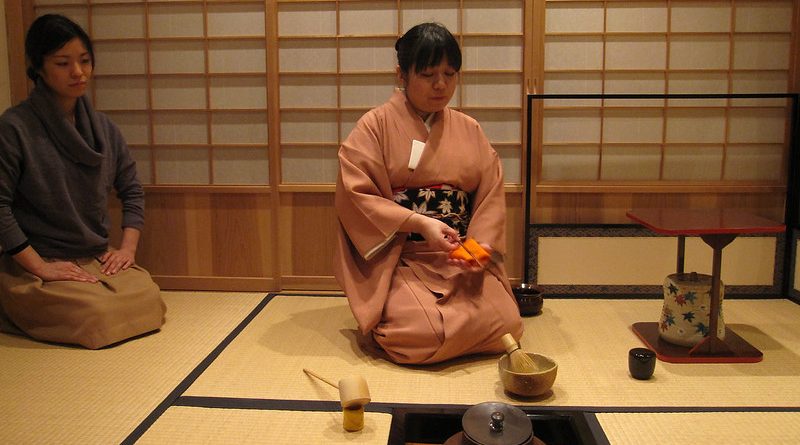Zen and the Art of Tea: The Japanese Tea Ceremony
Where:
Best brews produced with leaves from Shizuoka and the Uji Mountains in Honshu, Japan
Properties:
Japanese green tea is thought to cleanse the system and to heal
Ceremony:
Less about food and drink and more about art, grace, and the appreication of nature
Origins and history:
Tea camellias (shrubs) were introduced to Japan by Chinese Buddhist monks in the ninth century, and the first place they flourished was the Uji Mountains beyond Kyoto in south-west Honshu. This area, along with Shizuoka to the west of Tokyo, still produces the best tea to this day. The very same shrubs also bear the oxidised black tea exported to thirsty Brits, but the secret of green tea’s properties lies in the processing; after picking, the leaves are steamed for 30 seconds and rolled up into thin threads which unfurl when dunked in hot water to release their fresh, grassy flavour.
Green tea is a miraculous brew which wards off infection, calms the nerves and revitalises the drowsy. Packed with vitamins and containing small amounts of caffeine compared with coffee, it is even thought to protect against arthritis and types of cancer.
Green tea is a popular everyday drink in Japan, but the famous gathering known as the tea ceremony (chanoyu) involves the serving and drinking of a particular powdered kind called matcha, which only arrived in Japan at the end of the twelfth century. It was a further 200 years before the upper classes began to hold social gatherings for the purpose of drinking tea and appreciating Chinese arts in a serene environment.
Zen and the art of making tea:
The Japanese tea ceremony evolved under the influence of Zen Buddhism, aims to attain a perfect balance between nature and the human soul. This is done by performing the task of making tea in a series of graceful movements which, when done by a master, are a wonder to watch. Because chanoyu, the Japanese tea ceremony, is closely linked to the appreciation of art, nature and surroundings, it has had a great deal of influence on architecture, gardening, ceramics, and flower arranging. Japanese table manners are also derived from its essential etiquette.
Useful Links:
There are several places in Tokyo offering tea demonstrations.
Tea Hyakka: A monthly online magazine cover all aspects of the Japanese tea ceremony.
Great Resource on the Origins and History of Tea
You might also enjoy The World’s 10 Best Places To Try Tea




